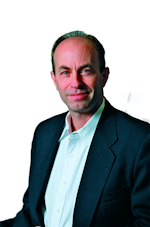The Snell Group (Montpelier, VT) will teach a course called Infrared Thermography and Radiometry for Natural Science Applications (August 10 to 14, 2009; Toronto, Ontario, Canada). The class will focus on the proper use of thermal imaging for a wide variety of natural-science applications that involve imaging humans, horses, domestic and wild animals, plants, and terrain.
The course will provide an introduction to the technology of thermal imaging and radiometry, as well as a sound experimental methodology for such applications as advanced detection of potential disease in livestock or screening for fever in humans. Recent reports, such as ISO/TR 13154:2009 (available from the International Organization for Standardization), have highlighted breakthroughs in the application of IR imaging in exposing disease and illness.
Infrared cameras are now less expensive than ever, but many people are not aware that training is needed to achieve good scientific data, says Greg McIntosh, managing director of the Snell Group's Canadian office. "Thermography is not just about using a camera; it's the interpretive science relating surface thermal patterns to heat flow and temperature and their underlying cause," he notes. McIntosh has worked for the past seven years on developing natural-science methodology; his thermography work on bats can be seen on the BBC series, "Life of Mammals."
The five-day course will cover the use and theory of IR camera technology, principles of remote noncontact temperature measurement, the influencing factors affecting data accuracy, and the ways to produce repeatable results. Application discussions will include the proper protocols for investigation of human, equine, and animal diagnostics, as well as a wide variety of other natural-science field applications of flora, fauna, and terrain. Participants will learn how to operate a thermal imager as well as software image analysis. Attendees do not need to own a camera, as IR instruments will be available for use.
Registration is now open online at www.thesnellgroup.com or by calling +1.905.508.3305.

John Wallace | Senior Technical Editor (1998-2022)
John Wallace was with Laser Focus World for nearly 25 years, retiring in late June 2022. He obtained a bachelor's degree in mechanical engineering and physics at Rutgers University and a master's in optical engineering at the University of Rochester. Before becoming an editor, John worked as an engineer at RCA, Exxon, Eastman Kodak, and GCA Corporation.